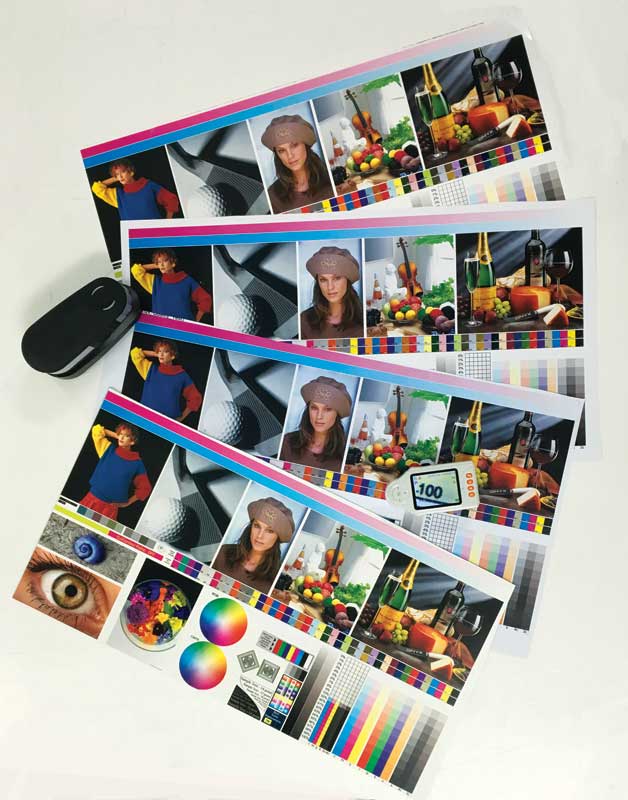
Custom profiles are developed for the precise resolution and speed of the combination of printer, ink and media.
A series of choices
In the world of wide-format inkjet printing, colour management ultimately comes down to a series of choices. How signmakers make those choices will have a significant impact on the visual appearance of the graphics they produce using any given device (or series of devices).
One of the first choices is how the design workstations will be configured. At the outset, it is important to make time to calibrate the monitors and confirm all workstations and design applications are using the same colour management settings.
After these design settings have been established, the next big decision is whether to develop a custom colour profile or to use a ‘canned’ International Color Consortium (ICC) profile. Many professionals mistakenly assume going with a canned profile means having to sacrifice certain attributes like G7 compliance, but this is not necessarily the case.
It is quite possible for a canned ICC profile, depending on its source, to have been developed in a way that will result in G7-compliant printed graphics, but to achieve a sufficient level of conformance, it will usually be necessary to change a couple of colour management settings within the RIP software, just like the aforementioned examples within the design software.
CMYK source profile
The first setting to consider is the CMYK source profile, which defines the target colour gamut the RIP should aim for when outputting the file to be printed. Given the G7 methodology is intended to calibrate CMYK devices, the key here is to focus on the input profile for the test image files that will be sent to the printer to assess their conformance.
GRACoL 2006 and GRACoL 2013 are both suggested starting points when checking a canned profile for G7 conformance. If they are not available as selections within the RIP software, then they can be downloaded from IDEAlliance’s website (www.idealliance.org).
The choice between these two versions of the CMYK source profile may be complicated, driven mostly by the particular instrument used to create a profile and measure the test image. When in doubt, it is best to start with GRACoL 2006.
Rendering intent
The second setting to consider is rendering intent, which guides the RIP in terms of how to map out-of-gamut colours from the source profile to the device profile. This can also be a rather complicated matter.
An absolute colorimetric rendering intent is suitable for very precise colour proofing, but is seldom used in wide-format inkjet print production, where graphics are intended to be viewed from further away.
A relative colorimetric rendering intent, which is the default setting in the aforementioned Adobe software, is a more appropriate choice for sign shops that provides consistent, repeatable mapping of colours and ensures G7 conformance most of the time.
A perceptual colorimetric rendering intent is a great choice for photographic work, but does not provide the consistent, repeatable colour mapping necessary for G7 conformance.
Test prints
As mentioned, once the graphic design applications have been properly configured and the RIP’s colour management settings have been selected, it is advisable to run a test print under those conditions, along with another test print with the original settings, so as to compare the results.
At this point, the same canned profile is being used, just with a few colour settings adjusted throughout the workflow to improve consistency. For some clients, this will be sufficient, but in other cases, the test prints reveal the need to develop a custom profile.





